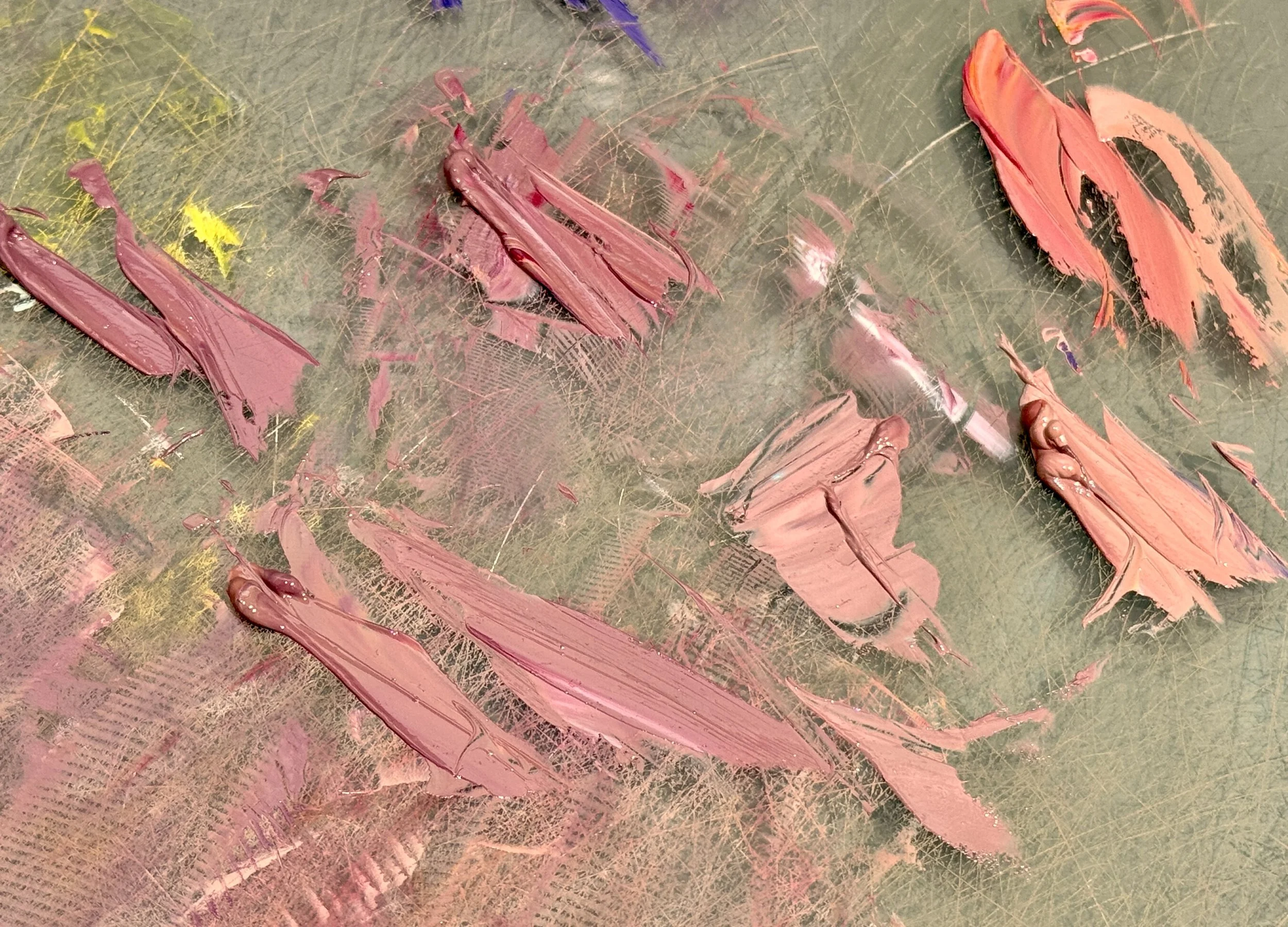Shimmer Without Drama In Coastal Paintings: Why Atmospheric Light Demands Restraint
Shimmer doesn't always need overt drama to be striking. And there's a challenge in painting atmospheric light: knowing when to let atmosphere breathe instead of pushing for effect.
In my latest works, "Wake Up Call" and "Edge of Dusk", I wanted to explore this restraint in atmospheric golden hour light. They became studies in capturing that subtle, elusive quality of coastal light that exists within moisture-laden air, that seems to glow from within rather than strike from above.
This is the light that gently envelopes you on a coastal walk, that makes you feel you're witnessing something sublime even though nothing "dramatic" is happening.
The Temptation of Contrast
When painting coastal seascapes at golden hour, there's always a seductive pull toward high contrast—brilliant highlights against deep shadows, theatrical light rays, that postcard-perfect drama. And I understand the appeal. Those moments exist, and they're visually arresting.
But I find myself increasingly drawn to a different kind of coastal light - The dawn and dusk light in atmospheric conditions is inherently low-contrast. The air is humid, dense with particles diffusing and scattering light. Everything exists in a veil of softness. Sharp edges dissolve. The world hasn't yet separated into distinct light and shadow—it's all one luminous, breathing entity.
Edge of Dusk: Learning from Fading Light
"Edge of Dusk" captures that suspended moment when day releases its hold on the world. This 36×36 sunset seascape painting is an intimate conversation between fading light and quiet water. The golden hour here isn't about drama—it's about dissolution, the gentle exhaling of day into night. There's something nostalgic about light that's fading rather than emerging—a sense of something beautiful coming to rest.
The most challenging part of this scene was painting that horizontal sandbar with its tidal pool in the middle of the water expanse. It's what I call "structureless structure"—it needs to exist as a defined form, yet it can't feel solid or hard-edged.
The technical puzzle: The sandbar had to provide that crucial middle-ground anchor between foreground and the horizon, yet it couldn't interrupt the atmospheric flow of light across the sand and water. Too much definition or contrast and it becomes a dark rigid barrier. Too little and it disappears entirely. The edges had to stay soft, almost dissolving, suggesting form through atmosphere rather than drawn boundaries.
Edge of Dusk Painting Detai
I worked with very close tonal values, letting the sandbar emerge through subtle shifts in color temperature rather than value contrast. Cooler violets and grays where the water deepens in the tidal pool, warmer peachy tones where wet sand catches light. Below you can see how close the tonal contrasts are in my paint mixes:
Wake Up Call: Exploring Soft Dawn Light
This 18×36 sunrise coastal painting captures that moment just after dawn breaks over a harbor. A moored sailboat and small dinghy rest in silhouette—I imagine them waiting for the fisherman in a nearby cottage to wake to birdsong and the dawn’s early light.
In comparison to Edge of Dusk, this painting came together more easily, thanks to its clearer structure and shape-oriented design from the start. The shimmer path across the water was the obvious focal point, and yes, I could have approached it in a more high-contrasted way, but to me this scene spoke of quietness. The early misty dawn light wasn’t about brilliance or drama—it was about the hush at the break of dawn.
I wanted the glow to feel as though it emerged from within the air itself—still luminous, but in an atmospheric, natural way. By keeping contrasts gentle and values close, the shimmer reads as ephemeral rather than a bold highlight. Through layers of gold, lilac, and pale cream, I wanted to create the kind of glow that feels breathed, not painted on top.
The Challenge of Simplicity
Here's what I'm learning about painting atmospheric light: it's deceptively unforgiving. High-contrast paintings with dramatic light and shadow provide clear value structure to work within. You know where your darks are, where your lights are. There's a framework.
Atmospheric paintings offer no such safety. When everything is relatively close in value—when you're painting shimmer that glows softly rather than blazes—every subtle shift becomes critical. A touch too much contrast and the atmosphere vanishes. Not enough variation and it goes flat, loses luminosity. You're constantly adjusting, second-guessing, trying to find that narrow zone where it works.
Both "Wake Up Call" and "Edge of Dusk" required this kind of vigilance: building up translucent layers, constantly assessing color temperature shifts, stepping back repeatedly to see if the light feels present without being overstated.
The technical challenge doesn't announce itself in the finished work—and I'm never entirely sure if that's a strength or a weakness. Does it read as effortless, or does it just read as quiet?
My endeavor was to paint lived-in coastal atmosphere and moments, to go a little deeper beneath the surface. In choosing restraint, I found an authentic expression of coastal calm and luminous serenity. Maybe as a viewer of the finished painting, you can imagine the humidity in that air, the sound of water lapping, the particular quality of stillness that golden hour brings, or whatever else your unique experience offers. Whether that authenticity resonates—that's what I'm hoping to discover.







